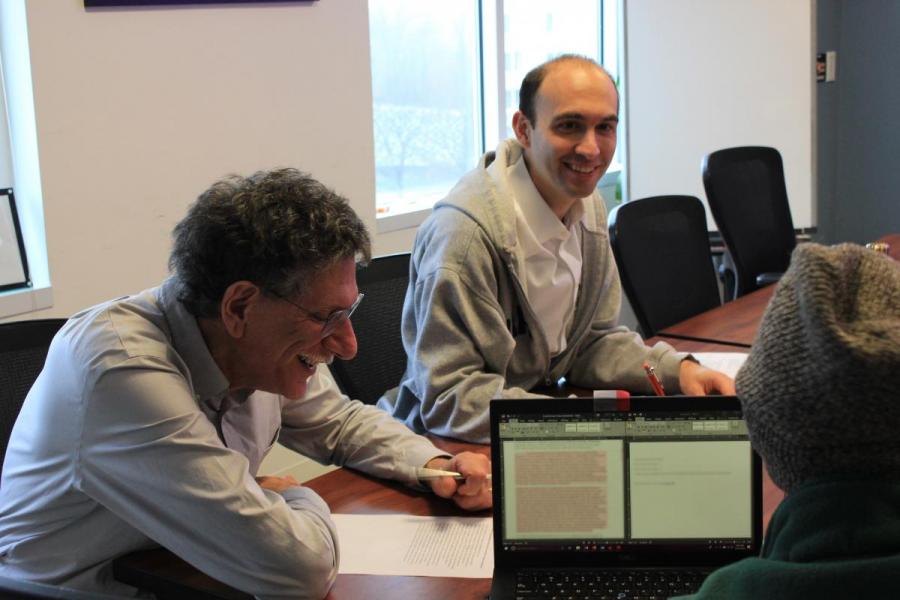
"As a scientist, you are a professional writer," said Dr. Joshua Schimel during a recent science writing workshop held at the National Socio-Environmental Synthesis Center (SESYNC). During this event, SESYNC postdocs had the opportunity to immerse themselves in the storytelling process.
Schimel, a professor at the University of California Santa Barbara, is the author of Writing Science: How to write papers that get cited and proposals that get funded. Using this book as a basis for the workshop, Schimel provided SESYNC postdocs with insights into how to effectively connect with different audiences when writing about their research.
Prior to the workshop, participants developed writing samples that followed the OCAR format: opening, challenge, action, and resolution. Later in small groups, participants then had the opportunity to give and receive feedback on those drafts, focusing on the topics of structure, flow, and word choice. Dr. Schimel argued that all good manuscripts have these same elements of a good story. “Writing science is about telling a story about nature,” he said.
One of the most important things a writer should keep in mind, Schimel said, includes learning to live with bad first drafts. Schimel shared his philosophy that good writing isn’t about getting the first draft perfect, it’s about getting a final draft that’s good enough. The goal should be to limit self-criticism during early drafts and hone the ability to edit effectively during revisions.
Another key component of best writing practices, according to Dr. Schimel, is to smooth the way for the reader. Conventional writing in science can be obscure and difficult to read, but a more difficult to read piece is not de facto more scientifically sound. “As the author, it’s your job to make the reader’s job easy,” Dr. Schimel said.
This workshop was part of SESYNC’s Immersion Program, which offers a series of collaborative workshops led by distinguished scholars. This program is designed to immerse participants in theories and methods foundational to understanding current environmental challenges and their underlying socio-environmental systems.